Home » Gear Reviews » Ski & Snow » Ski Jackets » Heavily Insulated Ski Jackets » Columbia OutDry EX Diamond Piste Jacket
Columbia OutDry EX Diamond Piste Jacket Review
December 6, 2018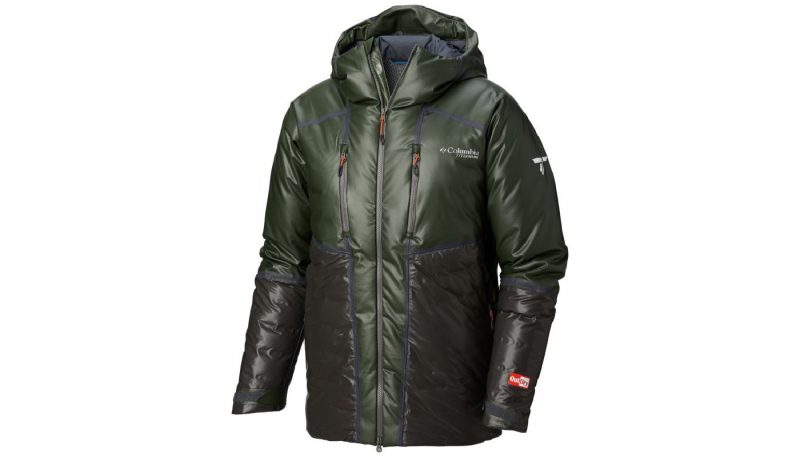
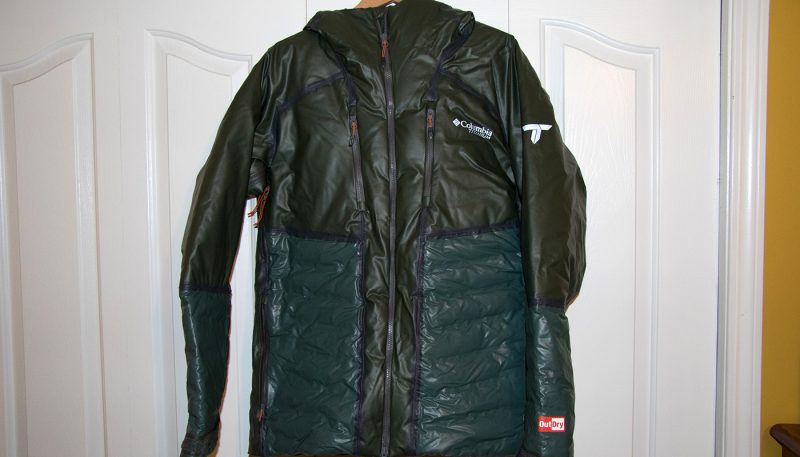
















 82
82 The Good
- Waterproof down insulation
- Durable face fabric
- High warmth to weight ratio
- Lots of pockets
- Comfortable fit
The Bad
- Loud plasticy fabric
- Mesh backed pit zips don’t open much
- Unflattering exterior look
Materials
The Columbia OutDry EX Diamond Piste Jacket features new technology for fall 2018. It uses Omni Heat 3D lining which they tout as groundbreaking technology for its ability to increase both heat reflection and retention. Testers were overall extremely pleased with the performance of this jacket with this new warmth enhancing technology. The jacket also has 800 fill down insulation which is some of the warmest insulation you could have in a jacket. The jacket is coated with an OutDry waterproof membrane to protect the down lining and is even seam sealed on the outside to ensure no water leaks through. The fabric is made out of durable material to prevent feathers from poking through. In addition, the shell material is slightly stretchy so the range of mobility isn’t compromised. The main complaint that testers had was that the material had a plasticky feel to it that both looked and felt cheap. It didn’t help matters that the external seam tape and a large red OutDry logo were both a bit unsightly.
Features
The OutDry EX Diamond Piste has many of the features of a standard resort jacket. It comes with a removable powder skirt which is expected for such a cold weather jacket to prevent cold air or snow ingress. It also has fleece-lined hand warmer pockets which proved a nice extra touch for gloveless hands. The double external chest pockets are plenty spacious for easy access items. For added storage space, it has mesh pockets inside the jacket that are slightly harder to access than other jackets. For those with an RFID pass or that like to have it in a handy pocket, there is the zippered pass holder pocket on the arm. Two features that all the other heavily insulated jackets tested had that the Diamond Piste was missing were wrist gaiters to seal up the cuffs and integrated RECCO reflectors. However neither of these were features were ones that testers thought were essential in a jacket of this nature.
Weatherproofness
Since this jacket uses 800 down fill, testers were hoping it would be accompanied with a suitable exterior shell to prevent water from getting in. They were pleased to note that the outer shell was very durable and waterproof during their season of testing. The external seam tape is a unique feature to ensure the waterproofness of the jacket.
Temperature Control
Heavily insulated jackets have a tough challenge of keeping the user warm in even the coldest conditions while also not causing them to overheat and subsequently get cold on the chairlift. Testers found the Columbia OutDry EX Diamond Piste did a great job of breathing due to its down insulation which can also absorb moisture if overheating. The jacket was extremely warm yet the testers never reported a sense of clamminess when wearing it. Due to the down insulation and minimal features testers also appreciated the high warmth to weight ratio of this jacket.
Fit/Comfort
Overall testers though the fit and comfort of the Columbia OutDry EX Diamond Piste were pretty standard though some took issue with the rubbery feel of the exterior. The jacket was comfortable to wear and had a great range of motion which testers enjoyed. It was also was true to size and was plenty long to not allow any snow or cold air in around the waist. However, the general texture of the outer fabric has a strange feel to it which creates to a cheap look and sounds crinkly when moving around which testers didn’t enjoy.
Value & Style
At $499 the Columbia OutDry EX Diamond Piste is a typical price for a quality heavily insulated jacket. Considering the 800 fill down insulation, and the overall warmth to weight ratio, testers considered this to be a great overall value. On the downdownsidesters were so put off by the style of the jacket initially they didn’t even want to wear it on the mountain. The external seam tape and high denier fabric felt more like wearing a duffel bag than a ski jacket, and the variety of dark green coloring on the test piece wasn’t going to be getting any looks at the bar. But color and looks aside, there was no denying that this jacket was tough, warm and comfortable. If we see some better color options from Columbia, this may become a serious hit with the cold weather ski crowd.
All the ski jackets and pants reviewed are tested by the same five criteria; materials, features, weatherproofness, temperature control and fit/comfort. All the pieces were tested over multiple days in a variety of conditions to see how they perform throughout an entire ski season. Testers do all they can to try out every piece on the same day to compare each one in similar conditions and they get out on lots of days to test the jackets in a range from sunny spring days to stormy wintery days to see how they hold up.
For materials, the specifications provided by the brands is often very important. These specifications tell us what type (if any) and amount of waterproofing or insulation a jacket may have. With a wide variety of third-party insulating and waterproofing materials available, as well as the recent rise of “in house” proprietary materials being used, it is important to know exactly what fabrics and insulations are being added to each piece in an effort to distinguish what makes one piece better than the next. Since testers typically only have only one season to test these pieces, durability is determined in part by any obvious fraying, ripping or other signs of reduced durability.
Since heavily insulated jackets are primarily intended for lift accessed skiing and riding there is an expectation that features will be tailored to provide the ultimate in comfort and convenience when on the mountain. This means that features such as a powder skirt, pockets for gear, a dedicated pass pocket, a helmet compatible hood, and wrist gaiters are all expected and then extra features such as a RECCO reflector or insulated phone pocket are considered a bonus.
The weatherproofness of a jacket first depends on what the intended purpose of the jacket is and then is based on the specifications that the brands supply. Since most heavily insulated jackets will be used at the resort under cold conditions there is an expectation that the jacket be able to shed blowing snow for the stormiest of days yet also fairly breathable. Since these jackets are for very cold weather, waterproofness isn’t as necessary.
The temperature control of a jacket is also based on the specifications that the manufacturer provides. The line between a lightly and heavily insulated jacket isn’t clear cut but generally one would expect to use a heavily insulated jacket primarily when the temperatures drop well below freezing and need to still be comfortable when the day proceeds to get even colder. The jackets are then rated to how well they do in very cold temperatures and more importantly how well the jacket does when the temperatures fluctuate which is a common occurrence for any regular snow sports enthusiast. Breathability plays a big factor here because the breathability of a jacket will affect how warm or cold one feels as heat generated while skiing and then go sit on a long chair lift afterwards. The ability to fully unzip pit zips is a crucial part of temperature control since that is often the largest factor in preventing overheating.
Lastly, the fit and comfort category is fairly subjective but having multiple testers use the product provides for a good range of body shapes and opinions. Factors that are important here are how long or short a jacket is and if it is true to size. For determining comfort, the amount of stretch the jacket has and how soft it is on the inside often plays into the rating.
Adrianne Bouchard is a triathlete, skier, backpacker and lover of all things outdoors based in the Tahoe area.














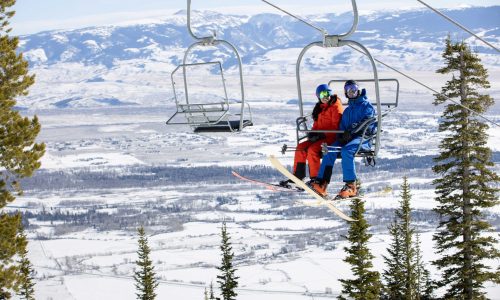
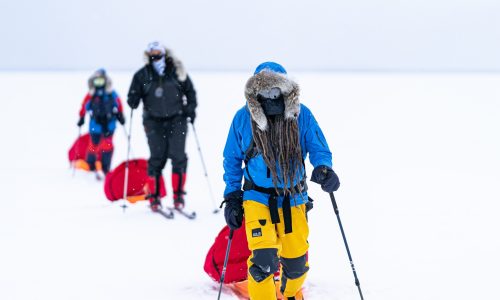
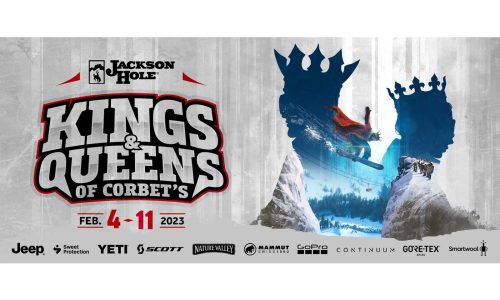
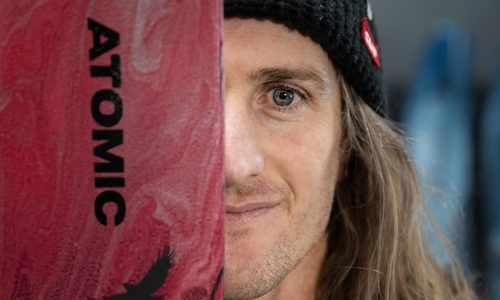


No reviews have been posted for this product.
Use this gear?
Join Gear Nation and leave a review!
Create an Account